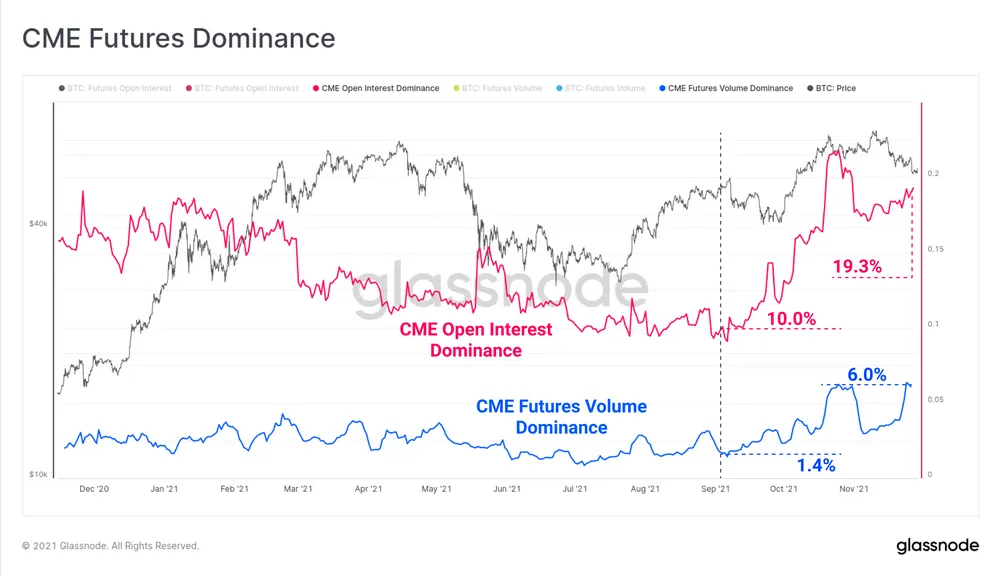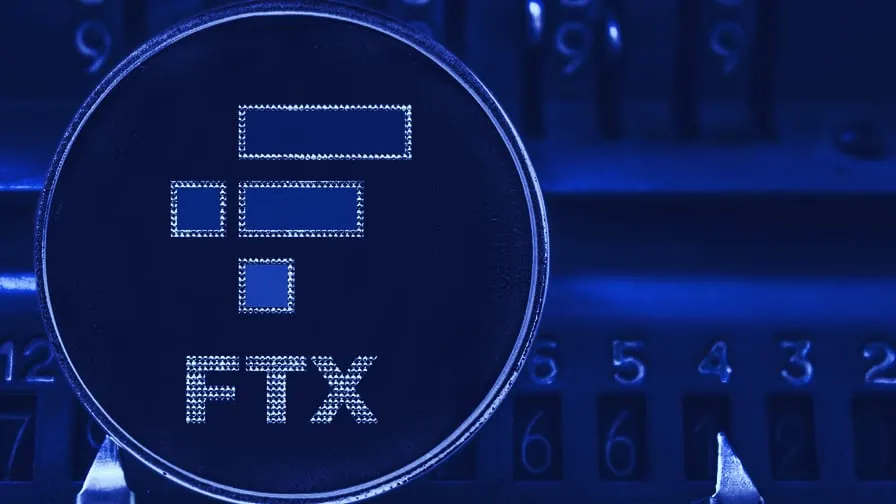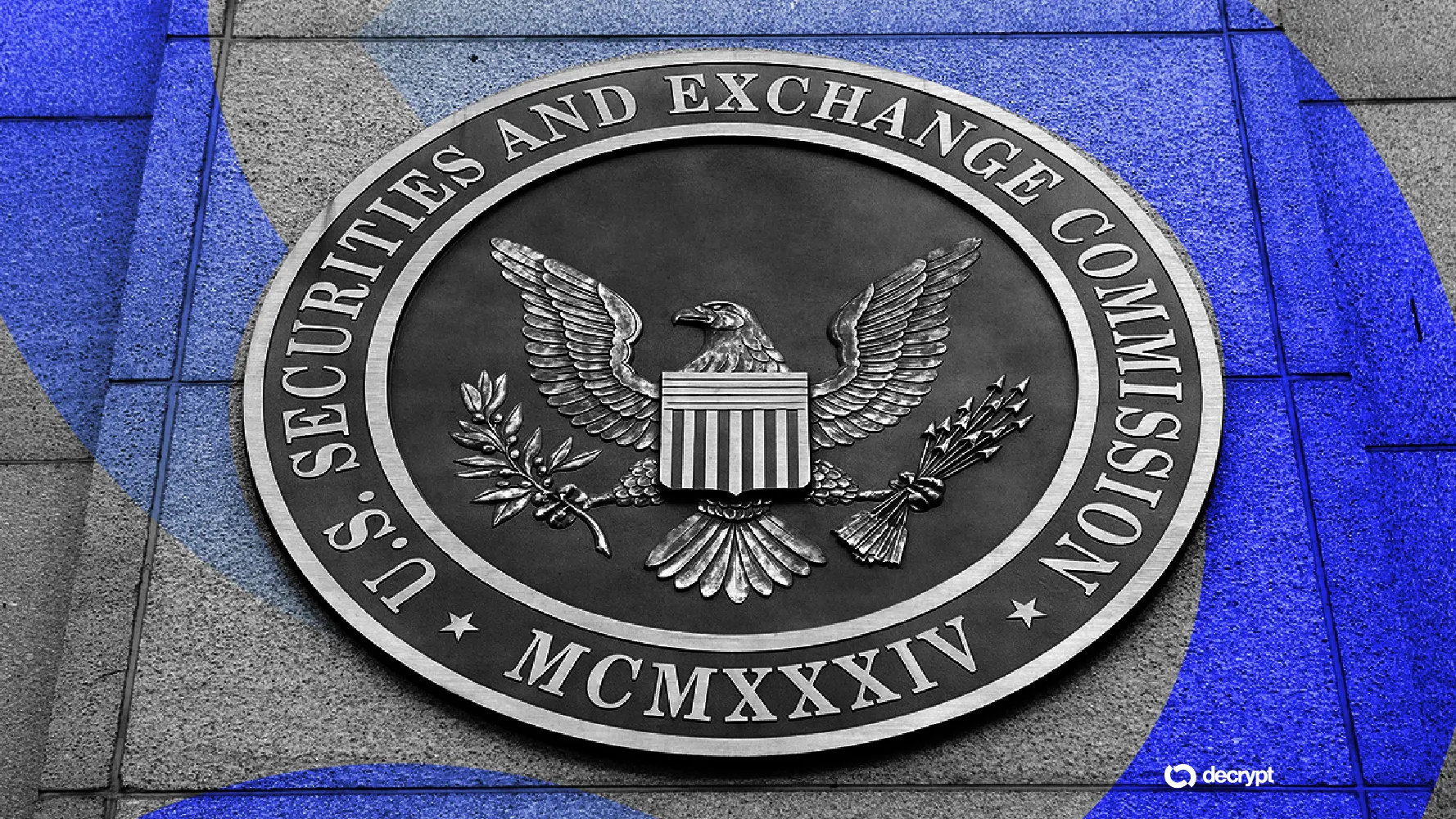There’s mounting evidence that it’s been a big year for crypto derivatives, contractual agreements to buy or sell crypto assets based on future prices.
The latest signal comes from a Glassnode report that notes excessive leverage (the high risk inherent in using a relatively small amount of capital to speculate on price movement) in derivatives markets makes them worth watching, as it can unwind in “a fairly spectacular way from time to time.”
For example, open interest (outstanding contracts that haven’t yet settled or expired) across all BitcoinBitcoin derivatives markets slid from the $12-14 billion highs seen in October and November. Open interest currently sits at $10 billion after contracts pegged to November 26 expired last week.
Even with the drop, Glassnode says open interest and futures volumes have been rising steadily since Bitcoin futures backed ETFs–ProShares Bitcoin Strategy ETF (BITO), Valkyrie Bitcoin Strategy ETF (BTF), and VanEck Bitcoin Strategy ETF (XBTF)– launched in the U.S.
Contracts on the U.S.-based CME derivatives exchange represent 19% of all futures open interest. That’s almost double what it was in September, according to Glassnode. Over the same period, trading volume in Bitcoin derivatives on CME has grown from 1.4% to 6%.

That growth comes despite the fact that the ETFs themselves have seen pretty moderate success after the fanfare surrounding their launches. Together, their assets represent roughly 15% of the current $10 billion open interest.
ProShares’s ETF reached $1 billion in assets over two days, faster than any ETF before it, and now sits at $1.4 billion. But its share price has dropped 13% since launch. Valkyrie’s BTF, with $58 million in assets under management (AUM), has lost 7% off its debut share price and VanEck’s XBTF, with $11 million AUM, is down 4% from its launch.
There are also signs that big exchanges have been jockeying to give CME some competition for U.S.-based customers looking to trade crypto derivatives.

FTX US to Launch Crypto Derivatives After LedgerX Acquisition
FTX’s U.S.-based crypto exchange announced today that it would acquire LedgerX, a crypto derivatives trading platform regulated by the Commodity Futures Trading Commission (CFTC). The terms of the deal, which are expected to be completed by October 2021, have not been disclosed, and it will have no impact on LedgerX's operations as the exchange will continue to provide its current offerings to the existing customer base. Provided the acquisition is closed, FTX.US will have the ability to offer B...
Just today, Singapore-based Crypto.com announced that it paid $216 million to acquire two companies, North American Derivatives Exchange (Nadex) and Small Exchange from IG Group, a London-based financial services group. Once the ink dries on the deal–pending regulatory approval, of course–Crypto.com will be able to offer derivatives and futures products to its U.S.-based users.
This is the same company that’s had its logo splashed all over Formula 1 races since the summer as part of a $100 million partnership deal and recently spent $700 million for the naming rights to the Staples Center in Los Angeles.
In October, FTX’s U.S.-based arm completed its acquisition of derivatives exchange LedgerX. Through the deal, which includes renaming LedgerX to FTX US Derivatives, the company has gained U.S. Commodity Futures Trading Commission licenses. That means it can now offer Bitcoin and Ethereum options and futures contracts to its customers.
FTX CEO Sam Bankman-Fried, who’s had a big year for acquisitions and partnerships, called it “probably one of the most exciting announcements we’ve ever had.”
1) This is probably one of the most exciting announcements we've ever had.@ftx_us + @ledgerxhttps://t.co/nQmk2mx3i1
— SBF (@SBF_FTX) August 31, 2021
Coinbase has meanwhile taken a different approach. The publicly traded crypto exchange submitted paperwork in September to register as a futures commission merchant with the National Futures Association. As of Wednesday afternoon, the Coinbase Financial Markets Inc. application was still pending.




